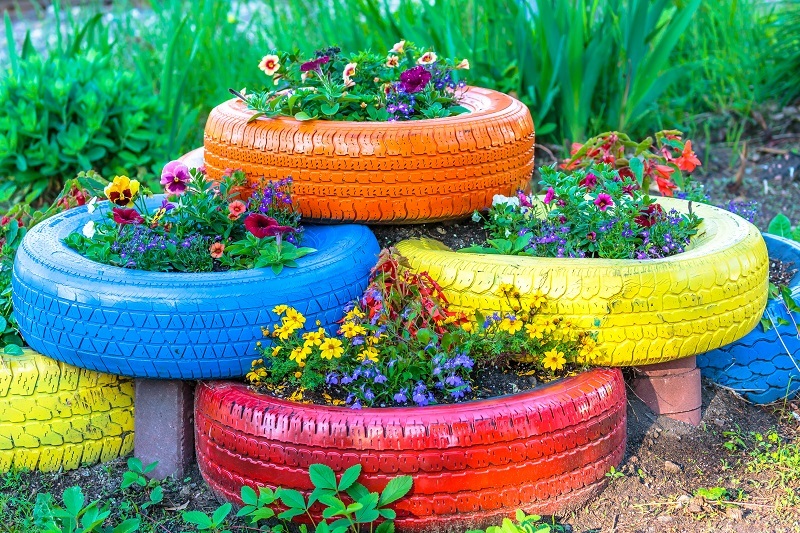Unlock Your Orchid's Potential with Specialist Care Advice
Posted on 14/08/2025
Unlock Your Orchid's Potential with Specialist Care Advice
Orchids captivate plant lovers worldwide with their exotic blooms and intriguing forms. However, caring for orchids can be daunting even for experienced gardeners. In this comprehensive guide, discover how specialist care advice can help you unlock your orchid's true potential, ensuring years of vibrant growth and spectacular flowering.

Understanding Your Orchid: The First Step to Success
Before diving into advanced orchid care tips, it's essential to understand the basics of your orchid species. With more than 25,000 orchid species out there, each has its unique requirements. Most home growers cultivate species like Phalaenopsis (Moth Orchid), Cattleya, Dendrobium, and Oncidium. Properly identifying your orchid is the foundation of any specialist orchid care regime.
- Check label or consult orchid identification guides.
- Observe growth patterns and foliage shape.
- Note flower appearance and blooming habits.
Unlocking your orchid's potential begins with knowledge of its origins and lifecycle. Certain orchids thrive in warm, humid climates, while others prefer drier, cooler conditions.
The Fundamentals of Optimal Orchid Care
Master Light Requirements for Vivid Blooms
Orchids are sensitive to light intensity. Moth orchids like Phalaenopsis favor low to medium filtered light, while Cattleya types flourish in brighter conditions.
- Too little light: Fails to produce flowers, leaves turn dark green.
- Too much light: Leaves develop yellowish tones or scorched patches.
- Optimal: Place near east or north-facing windows, or use sheer curtains to diffuse sunlight.
Tip: If you're not sure whether your orchid is receiving the right amount of light, observe the color of its leaves. Healthy light levels usually result in medium to light green foliage.
Watering: The Key to Avoiding Orchid Ailments
One of the most common mistakes is overwatering, which can lead to root rot and stunted growth. Specialist orchid care advice stresses the importance of checking your specific variety's needs.
- Phalaenopsis: Water once the potting medium nearly dries out (usually every 7-10 days).
- Cattleya and Oncidium: Allow the growing medium to dry out completely between waterings.
- Always use tepid, filtered, or distilled water to prevent mineral deposition.
When in doubt, under-watering is safer than over-watering. Water early in the day to allow the plant to dry by nightfall, reducing the risk of fungal diseases.
Humidity and Airflow: Mimic Nature for Healthier Growth
Orchids originating from rainforests demand humidity levels of 50-70%. Home environments often require adjustments, especially during winter when heating dries out the air.
- Use a humidity tray filled with pebbles and water beneath your orchids.
- Group orchids together to promote microclimates.
- Employ a humidifier or mist plants in the morning.
Air circulation is equally important. Gentle airflow (such as from a fan) keeps leaves dry and discourages pests and molds, unlocking further orchid growth potential.
Temperature Control: Affects Flowering and Growth
Specific orchids have varying temperature preferences. As a rule of thumb:
- Phalaenopsis (Moth Orchid): 65-75?F (18-24?C) daytime, not dropping below 60?F (15?C) at night.
- Cattleya: Prefer 70-85?F (21-29?C) days and 55-60?F (13-16?C) nights.
*Unlock your orchid's flowering potential by providing a slight drop in night-time temperature--this can trigger blossoms!
Advanced Specialist Orchid Care Advice
Potting and Repotting: Choosing the Right Medium
Unlike many houseplants, orchids rarely grow in soil. Instead, use a specialized orchid mix, which typically includes bark chips, sphagnum moss, perlite, and charcoal.
- Repot every 1-2 years or when the medium breaks down.
- Choose a transparent pot for Phalaenopsis to monitor root health.
- After repotting, avoid fertilizing for 2-3 weeks while the plant adjusts.
Sign of a problem: If roots are brown and mushy, or leaves shrivel, your orchid likely needs repotting or a drier medium.
Fertilizing for Maximum Growth and Blooms
Unlock your orchid's growth and flowering by following this golden rule: "Feed weakly, weekly."
- Use a balanced fertilizer (20-20-20) or a specialist orchid food.
- Apply diluted fertilizer every week during active growth periods.
- Rinse with plain water between feedings to avoid mineral build-up.
During dormant periods or winter, reduce feeding frequency to once a month.
Pest and Disease Management: Keep Orchids Healthy
Even with specialist care, orchids can succumb to pests and diseases. Regular inspection and prompt action are key to protecting your plant's potential.
- Common pests: Mealybugs, spider mites, scale, and aphids.
- Disease signs: Yellowed leaves, spots, or soft, mushy roots.
Treat infestations with insecticidal soap, neem oil, or isolate affected plants. Maintain cleanliness in your growing area to dramatically reduce the risk of issues.
Unlocking the Mysteries of Orchid Re-Blooming
If your orchid refuses to bloom again, don't despair. Unlocking your orchid's re-blooming potential involves addressing several factors:
- Ensure sufficient light - increase intensity gradually if needed.
- Provide a temperature difference between day and night.
- Fertilize correctly during the growth phase.
Phalaenopsis orchids often bloom on old spikes. After flowering, trim the stem just above a node to encourage additional blooming cycles.
Specialist Orchid Care for Rare and Unusual Varieties
Some collectors choose exotic species like Vanda, Paphiopedilum, or Dracula orchids. These require highly specialized care:
- Vanda Orchids: Thrive with daily watering, high humidity (80%), and plenty of light.
- Paphiopedilum (Slipper Orchids): Need consistently moist substrate and shaded light.
- Dracula Orchids: Prefer cool, moist, and shaded environments, emulating cloud forests.
When experimenting with rare orchids, always source advice from reputable specialists or local orchid societies. Unlocking the potential of such wonders requires dedication, research, and sometimes a bit of trial and error!
FAQs: Your Specialist Orchid Care Questions Answered
How often should I water my orchid?
This depends on the variety, potting mix, and your home's environment. As a general rule, water when the top inch of the medium feels nearly dry, and avoid letting roots sit in water.
Why are my orchid's leaves turning yellow?
Yellowing can signal overwatering, insufficient light, or natural aging of leaves. Assess your care routine and adjust as per the specialist tips outlined above.
Is it normal for orchid roots to be exposed?
Yes! Many orchid species are epiphytes, growing on trees in nature. Aerial roots often extend outside the pot--this is perfectly normal and healthy, provided they are green and firm.

Unlock Your Orchid's Full Potential: Proactive Tips from Experts
- Keep a care journal - Record watering, fertilization, and flowering periods.
- Join local orchid societies for access to workshops, shows, and top-notch advice.
- Invest in quality tools: sterilized shears, humidity gauges, and specialist fertilizers.
- Rotate your plant regularly for even growth and exposure to light.
- Repot on a schedule to maintain vigorous roots and prevent disease.
Unlocking Orchid Potential with Specialist Advice: Final Thoughts
Orchids may be delicate, but with specialist care and a little patience, they will reward you with unforgettable displays and years of enjoyment. Unlocking your orchid's potential comes down to matching their unique needs with expert tricks: right light, balanced water, ideal air, and timely intervention. Whether you aspire to grow classic Phalaenopsis or rare collector's items, this advice arms you with everything you need for spectacular results.
Staying informed, observing your plants, and connecting with other orchid enthusiasts amplifies your success – making orchid growing a fulfilling, lifelong passion.
Begin today: Follow the specialist care advice in this guide, and watch as your orchid's true splendor is unlocked!
Latest Posts
Expressive Blooms: The Color Symbolism of Peony Flowers
Unlock Your Orchid's Potential with Specialist Care Advice
Blooming Love: Five Flowers to Gift on Valentine's Day
Hydrangea Planting and Maintenance Tips
What Can Your Birth Flower Tell You About Your Unique Qualities?






